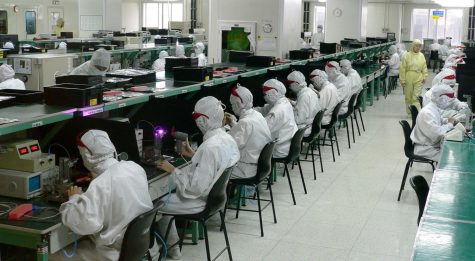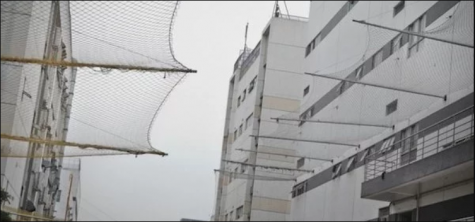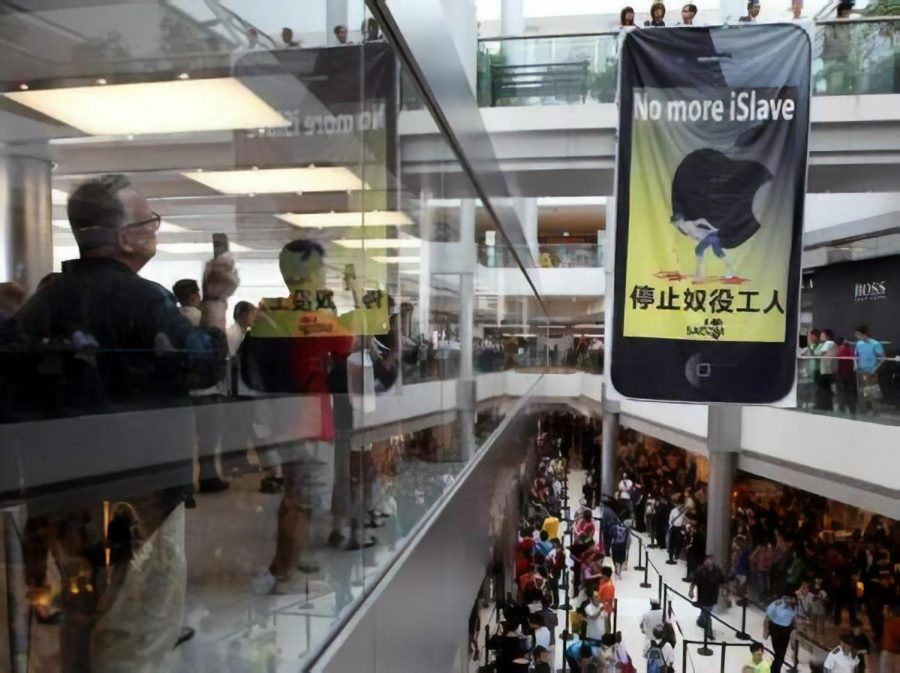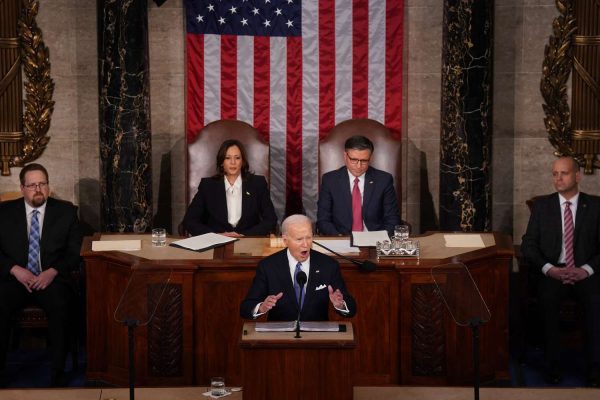The Human Cost of iPhones
How Chinese Companies Exploit Workers
No invention has changed our lives quite like smartphones. The iPhone, in particular, has become central to our lives. But how are iPhones manufactured? Where do they come from? What kind of work goes into them?
iPhones aren’t made in the United States. It’s much easier to find suitable workers and factories in China. There simply aren’t enough Americans with the mid-level skills needed for factory work. Additionally, China’s laxer regulations make it a better business decision for manufacturing. A well-known instance of this happened in 2007, when—just over a month before the iPhone was set to launch—then-CEO Steve Jobs demanded that the plastic screens be replaced with scratch-resistant glass. Achieving this would require extreme precision in glass cutting and grinding, which would be accomplished by an American company, Corning Inc. But they also needed a massive empty cutting plant, hundreds of experimental glass pieces, and a massive number of mid-level engineers. It was prohibitively expensive—until they saw a bid from a Chinese factory. When representatives from Apple visited, the factory was already constructing a new wing (in case they got the contract), had a warehouse filled with free glass samples, cheap engineers, and on-site dormitories. Picking the Chinese plant wasn’t a difficult choice.
Half of all iPhones are made in Lounghua Business Park, presided over by Hon Hai Precision Industry Co.—better known as Foxconn City. And it really is a city: hundreds of thousands of workers live there, most of them from rural communities. Everything is carefully regulated, and the company is very secretive. Security guards man every entrance, employees need ID cards, delivery drivers get fingerprint scans, journalists are carefully toured. Workers have to work illegal night shifts and overtime, are exposed to hazardous materials, and are underpaid (many make less than $17 a day).

In 2010, of the conditions in Chinese factories, Steve Jobs said “I mean, you go to this place, and, it’s a factory, but, my gosh, I mean, they’ve got restaurants and movie theaters and hospitals and swimming pools, and I mean, for a factory, it’s a pretty nice factory.” In October 2012, Foxconn admitted they had illegally hired 56 underage workers. They stopped immediately when discovered, but it happened again in November 2017. In May 2011, an explosion caused by aluminum filing concentration in the air killed 4 people and injured 18. The explosion would’ve been averted by better ventilation, but cost-cutting measures prevented this. Apple contributes to this endless cost-cutting: they demand highly detailed information on the costs of every part and the salaries and hours of every worker, then calculate payouts so that the supplier gets a tiny profit margin.
In another infamous case in October 2012, a Foxconn worker named Zhang Tingzhen was brain damaged by a work accident. He was repairing a spotlight on an external wall when he received an electric shock and fell 12 feet to the ground. Foxconn refused to compensate unless Tingzhen’s family drove him 43 miles to Huizhou to receive a medical assessment. Doctors warned that if he was transported he’d have a high risk of brain hemorrhage. Eventually, after the story gained media attention, Foxconn agreed to pay. But they payed only 11,000 yuan (about $1,800) a month. It wasn’t enough to cover all the costs, the family was left 30,000 yuan in debt, and the payments stopped after five months. Tingzhen’s father, Zhang Guangde, protested in front of Foxconn, amassing a group of about 50 people. Only then did Foxconn resume payments, but it still wasn’t enough to cover Tingzhen’s salary and monthly care costs.

For six months in 2006, BSR worked with Foxconn to try to establish a pilot program to create hotlines for employees. They would allow workers to discuss workplace problems, get mental counseling, and report abusive conditions. Over the course of the negotiations, Foxconn made progressively greater demands to change the project. First, they shifted from installing new hotlines to evaluating existing ones, then they excluded mental health counseling, then they asked participants to sign non-disclosure agreements. Finally, they agreed and scheduled the program to start in January 2008. But one day before the start, they demanded yet more changes, and it became impossible for the program to proceed.
Then, in 2010, the company became the center of a suicide scandal: that year, 18 people threw themselves from buildings in an attempt to kill themselves. At least 14 succeeded. In 2012, 150 workers gathered atop a building and threatened to jump unless improvements in working conditions were promised. Threatening suicide proved to be an effective bargaining tactic. It happened again with a smaller group in 2016. Today, massive nets extend from the sides of the buildings, in order to curtail suicide. But when Brian Merchant interviewed an anonymous worker, he was told that “the nets are pointless. If someone wants to commit suicide, they will do it.” These suicides have reduced in frequency over time, but they still happen. Just this January, a Zhengzhou dispatch worker named Ming Li working at a Foxconn factory jumped out a window.
Many tech companies, including Apple, Sony, Nintendo, Intel, and Google are Foxconn customers. “Made in China” is such a familiar phrase because Chinese manufacturing is much more cheap and efficient than American manufacturing. But the incredible efficiency of Chinese labor is possible only because of systemic abuse of Chinese workers.











